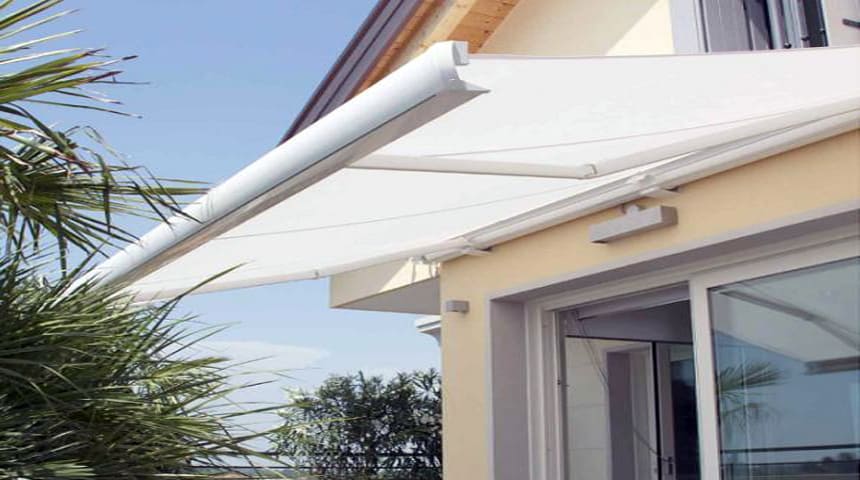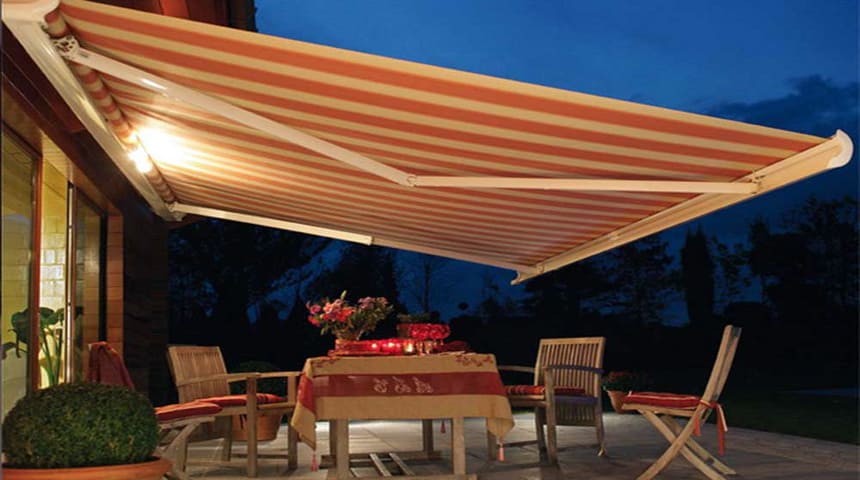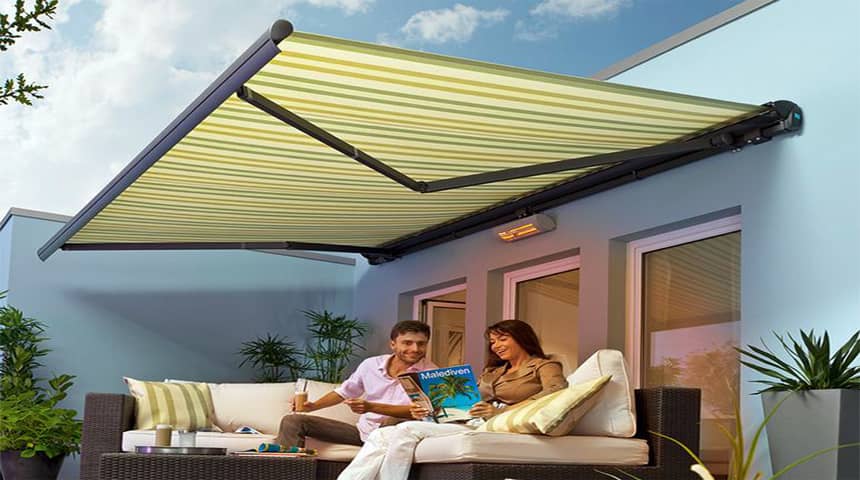Roller awnings have become a popular option for sun protection and decoration of outdoor spaces. Their practicality, versatility and aesthetic design make them an ideal solution for patios, terraces and balconies. In this article, we will explore in detail the essential parts of a roller awning, how they work and how they contribute to the overall performance of the awning.
Winding and unwinding mechanism of the parts of a roller awning.
The winding and unwinding mechanism is the heart of the roller awning. It consists of a system that allows you to adjust and control the extension of the awning quickly and easily. Key components include:
- Winding tube: It is the central element of the mechanism. Generally made of aluminum, it is strong and lightweight. The awning fabric is wound and unwound around this tube.
- Drive system: It can be manual or motorized. In manual awnings, a crank is used to roll up and down the awning. On the other hand, motorized awnings have a motor that performs this task automatically, which provides comfort and ease of use.
- Locking mechanism: This component allows you to secure this type of awning in the desired position once deployed. It can be a ratchet system, a brake or a locking lever, depending on the awning model.
- Pulley: The pulley helps guide the movement of the awning during the rolling up and unrolling process, ensuring a smooth and frictionless ride.
Fabrics and canvas.
The fabric of the awning is another fundamental aspect that determines its durability, resistance to the elements and aesthetic appearance. Some common types of fabrics used in roller awnings are:
- Micro-perforated canvas: Known for its high resistance to UV rays and its ability to repel water, acrylic canvas is a popular choice. In addition, it offers a wide range of colors and designs, allowing complete customization of the awning.
- Polyester: This material is known for its strength and durability. Polyester awnings are easy to maintain and are often a cheaper option compared to other fabrics.
- PVC: PVC is a resistant, waterproof and easy-to-clean material. It is ideal for areas with high exposure to water or humid environments, since it is highly resistant to humidity and mold.
It is important to consider factors such as local climate, degree of sun exposure and aesthetic preferences when choosing the right fabric for the parts of a vertical roller awning.

Fastening components of the parts of a roller awning.
The fastening components are essential to keep the awning in place and ensure its stability. These include:
- Wind and Sun Sensors: These sensors allow the awning to automatically adjust based on weather conditions. For example, if a strong wind is detected, the awning will automatically retract to prevent damage.
- Integrated lighting: Some roller awnings may include integrated lighting in the form of LED lights. This allows you to enjoy the outdoor space at night, creating a pleasant and cozy atmosphere.
Automation systems in the parts of a roller awning.
Automation systems allow the movement and regulation of the awning to be programmed according to pre-established schedules. This provides convenience and energy savings by ensuring the awning automatically opens or closes at specific times of the day.
- Wall brackets: These are the elements that fix the awning to the wall or nearby structure. Wall brackets are usually made of resistant materials such as stainless steel or aluminum, which guarantee a secure and long-lasting hold. They can be adjustable to allow the awning to be placed at different heights or angles.
- Extendable arms: These components are responsible for keeping the awning extended and taut when it is unfolded. Usually made of aluminum, they connect to the coil tube and extend outward to provide more coverage. Some models of roller awnings have arms with joints that allow you to adjust the angle of inclination.
- Guides: The guides are lateral elements that provide a smooth and controlled sliding of the awning during its opening and closing. They can be integrated into the extendable arms or be separate components. The guides prevent the awning from drifting off its path and ensure a smooth and smooth operation.

Tilt and regulation system of the parts of a roller awning.
The tilt system of the parts of a roller awning is a key feature of many roller awnings, as it allows the tilt angle to be adjusted to control the amount of shade cast. Some common regulation options include:
- Cranks: Awnings with manual adjustment mechanisms usually include a crank that allows you to adjust the inclination. By turning the crank, you can change the angle of the awning according to the needs of the moment.
- Pulley systems: Some roller awnings use a pulley system to facilitate regulation. This mechanism allows you to adjust the inclination of the awning in a smoother and more effortless way.
- Motorized Adjustment: Motorized roller awnings offer the convenience of tilt adjustment with the push of a button. With a motorized system, it is possible to control the tilt of the awning remotely, through a switch or even through a mobile application.
- Optional Extras and Add-ons: In addition to the essential parts mentioned above, some roller awnings may offer additional features that enhance their functionality and comfort.
Conclusions that we must take into account:
- An external roller awning consists of several essential parts that work together to offer sun protection, comfort and style to outdoor spaces. In this article, we have explored the parts of a roller awning and their importance in its overall operation.
- From the winding and unwinding mechanism to the fabrics and canvases used, each component plays a crucial role. The roller tube and the drive system determine the ease of use of the awning, while the locking mechanism and the pulley guarantee its stability during operation of all parts of a roller awning.
- Fabrics and canvases offer aesthetic and practical options. From acrylic canvas, which provides UV protection and water repellency, to durable polyester and waterproof PVC, each material used in the parts of a roller shade sail has its own characteristics and benefits.
- Fastening components such as wall brackets, extension arms and guides are responsible for holding the roll-up side awning in place and ensuring its stability. Choosing durable materials, such as stainless steel and aluminum, is key to a long-term, secure hold.
- The tilt and adjustment system allows you to adjust the angle of the roller canvas to adapt to different weather conditions and shade needs. From cranks and pulley systems to motorized adjustments, there are options in the parts of a roller awning to suit all tastes and preferences.
- In addition, some roller awnings offer optional extras and add-ons, such as wind and sun sensors, integrated lighting and automation systems. These additional features increase the comfort and functionality of the awning, providing an even more satisfying experience.
- By understanding the fundamental parts of a roller awning, consumers can make informed decisions when choosing the right awning for their needs. Whether it is about protecting an outdoor space from the scorching sun or embellishing it with style, a well-designed and equipped roller awning is sure to serve the purpose.
In short, by considering the winding and unwinding mechanism, the fabrics and canvas, the fastening components, the tilt and adjustment system, as well as the optional extras, you can find the parts of a roller awning that will perfectly fit your needs. individual needs and preferences. There are no limits to creating a comfortable and functional outdoor space with the help of a quality roller awning!

